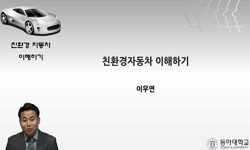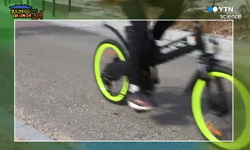(연구배경 및 목적) 공동주택 실외 놀이 공간은 다양한 커뮤니티가 일어나고 이용 빈도가 가장 높은 공간으로 거주자의 건강과 쾌적성 향상을 가능하게 한다. 이에 따라 환경보호와 에너지 ...
http://chineseinput.net/에서 pinyin(병음)방식으로 중국어를 변환할 수 있습니다.
변환된 중국어를 복사하여 사용하시면 됩니다.
- 中文 을 입력하시려면 zhongwen을 입력하시고 space를누르시면됩니다.
- 北京 을 입력하시려면 beijing을 입력하시고 space를 누르시면 됩니다.

공동주택 실외 놀이 공간 계획의 친환경적 평가에 관한 연구 = A Study on the Environment-friendly Evaluation of Outdoor Play Space Planning in Apartment Housing
한글로보기https://www.riss.kr/link?id=A104180405
- 저자
- 발행기관
- 학술지명
- 권호사항
-
발행연도
2017
-
작성언어
Korean
- 주제어
-
등재정보
KCI등재
-
자료형태
학술저널
- 발행기관 URL
-
수록면
39-48(10쪽)
-
KCI 피인용횟수
1
- DOI식별코드
- 제공처
-
0
상세조회 -
0
다운로드
부가정보
국문 초록 (Abstract)
(연구배경 및 목적) 공동주택 실외 놀이 공간은 다양한 커뮤니티가 일어나고 이용 빈도가 가장 높은 공간으로 거주자의 건강과 쾌적성 향상을 가능하게 한다. 이에 따라 환경보호와 에너지 절약을 위한 친환경적 요소가 적용된 실외 놀이 공간에 대한 관심이 확대되어지면서 환경과 조화를 이루고 환경을 배려하는 친환경 실외 놀이 공간의 필요성이 높아지고 있다. 이에 본 연구는 단지 내 실외 놀이 공간의 질 향상과 개선을 위해 실외 놀이 공간에 나타난 친환경적 계획요소를 평가하여 이를 토대로 향후 공동주택 실외 놀이 공간의 친환경적 계획방안을 위한 기초자료로 활용하고자 한다. (연구방법) 본 연구의 조사대상으로는 서울시에 위치한 공동주택 실외 놀이 공간 7곳을 대상으로 조사하였으며, 현장조사를 통한 사례분석으로 진행되었다. 친환경에 관한 선행연구 및 친환경 인증 제도를 바탕으로 추출된 친환경 요소를 통해 실외 놀이 공간의 친환경 평가를 위한 체크리스트를 작성하고 조사대상에 직접 방문하여 현장조사를 실시하였다. (결과) 본 연구는 공동주택 실외 놀이 공간의 쾌적한 환경을 제공하고 이에 대한 만족도를 향상시키기 위해 놀이 공간의 친환경적 요소를 평가하였으며 친환경적 요소를 토지이용 및 교통, 생태환경, 에너지 및 환경부하 감소 부문으로 분류하였다. 첫째, 대부분의 사례에서 기존 자연지형을 활용한 놀이 공간의 조성이 계획되어 있는 것으로 나타났으나 놀이 공간으로 접근하기 위한 자전거도로와 보행자 전용도로의 사용에 있어서는 문제점이 있는 것으로 나타났다. 둘째, 인공녹화기법 적용의 경우 측면녹화나 입면녹화의 형태로 조성되어 있는 반면에 녹지축 형성에 대한 고려는 미흡한 것으로 조사되었다. 셋째, 수자원 절약을 위한 우수부하 감소에 대해서는 비교적 양호한 편으로 나타났지만 우수활용에 여부에 대한 계획은 이루어지지 않고 있었으며, 에너지 이용 및 쓰레기 처리공간에 대해서도 다소 부족한 것으로 나타났다. (결론)놀이 공간 계획시 놀이 공간의 보행자 전용도로와 자전거도로를 분리시켜 아동들의 안전성을 향상시키기 위한 노력이 필요하며, 기존의 자연형 녹지를 활용한 녹지축 조성과 더불어 다양한 생태조경을 통해 자연 친환적인 놀이 공간 계획이 이루어져야 한다. 또한 우수활용 시스템을 통한 수자원 절약과 에너지 시스템을 설치하여 자원절약 방안을 도입하고, 주변의 경치와 어우러지는 태양광 조명시설과 청결성 유지를 위한 분리수거형 쓰레기 처리공간에 대한 고려가 필요하다. 향후 이를 근거로 하여 친환경적 실외 놀이 공간의 디자인 지침으로 활용될 수 있는 구체적인 방안에 대한 후속 연구가 이루어져야 한다.
다국어 초록 (Multilingual Abstract)
(Background and Purpose) Outdoor play spaces are often the most frequently used public spaces in apartment housing, and places where various communities are formed and residents` health and comfort can be improved. This interest in outdoor play spaces...
(Background and Purpose) Outdoor play spaces are often the most frequently used public spaces in apartment housing, and places where various communities are formed and residents` health and comfort can be improved. This interest in outdoor play spaces, combined with growing emphasis on environment-friendly materials and energy conservation, has expanded the necessity of developing outdoor play spaces that are in harmony with and protective of the environment. The purpose of this study is to evaluate environment-friendly elements relevant to outdoor play spaces to improve the quality of outdoor play spaces within apartment complexes, and, based on the results, to provide baseline data related to environment-friendly planning measures for future apartment housing outdoor play spaces. (Method) This study targeted seven apartment housing outdoor play spaces located in Seoul and conducted a case analysis through on-site survey. Environment-friendly elements were extracted from preceding environment-friendly research and the environment-friendly certificate system, and, based on the elements, a checklist was made for environment-friendly evaluation of outdoor play spaces. Then, on-site surveys were performed at the seven target spaces using the checklist. (Results) This study, which evaluated seven play spaces and classified the environmental elements of land use, traffic, ecological environment, energy, and environmental load, found that apartment housing outdoor play spacing houses appeared to have inadequately considered the environment in their planning stages. First, although plans for play spaces utilizing the existing natural terrain were established in most cases, some had problems in the use of bike lanes and exclusive pedestrian roads near and directed toward the play space. Second, with respect to the artificial greening technique, side greening and facade greening were well applied, but the axis of the green belt was insufficiently considered. Third, although the systems for both rainwater load reduction for water resource conservation and trash and garbage disposal turned out to be relatively favorable, there was no plan for the use of rainwater, and the energy use and garbage disposal spaces were not sufficiently considered. (Conclusions) When play spaces are planned, a primary goal should be to promote children`s safety. This includes creating separate bike lanes and pedestrian roads towards play space. It also requires more attention paid to environment-friendly materials in the play space, including creating the green axis using the existing green belt as well as various types of ecology. Sustainability must also be an important consideration. Plans for outdoor play spaces should include water and energy conservation measures through rainwater use systems, water resource conservation systems, energy systems, and solar-powered lighting and recycling-type garbage disposals in harmony with adjacent landscapes to maintain cleanliness. In the future, follow-up studies should be conducted on the specific measures to utilize the study results as guidelines for the design of environment-friendly outdoor play spaces.
참고문헌 (Reference)
1 손평식, "해운대 신시가지 공동주택 단지의 친환경 계획요소 특성에 관한 연구" 부경대학교 산업대학원 2014
2 황연숙, "임대아파트 실외커뮤니티시설의 디자인특성에 관한 연구" 한국공간디자인학회 5 (5): 117-126, 2010
3 임선화, "아파트단지 외부공간의 친환경요소 적용수준에 따른 거주만족도 비교 연구" 호남대학교 대학원 2007
4 김효정, "아파트단지 옥외공간의 친육아환경 요소에 대한 분석" 한국주거학회 28 (28): 95-107, 2017
5 조한별, "사용자 참여를 통한 공동주택단지 실외놀이환경 개선방안에 관한 연구" 서울시립대학교 대학원 2013
6 한정, "블록형 단독주택단지 친환경 외부공간 계획 방향 연구" 충남대학교 대학원 2011
7 김자경, "독일 공동주택 놀이터의 친환경적 특성 연구" 한국실내디자인학회 24 (24): 87-98, 2015
8 마현, "공동주택단지 내 실외 커뮤니티 공간에 나타난 친환경적 특성에관한 연구" 한양대학교 대학원 2016
9 이혜림, "공동주택단지 공용공간의 양상과 공간특성에 관한 연구 : 2006년 이후 준공된 공동주택단지를 중심으로" 남서울대학교 대학원 2013
10 한수애, "공동주택 외부공간의 친환경적 계획요소 적용특성에 관한 연구 : 김포한강신도시 턴키제출안을 중심으로" 경희대학교 대학원 2011
1 손평식, "해운대 신시가지 공동주택 단지의 친환경 계획요소 특성에 관한 연구" 부경대학교 산업대학원 2014
2 황연숙, "임대아파트 실외커뮤니티시설의 디자인특성에 관한 연구" 한국공간디자인학회 5 (5): 117-126, 2010
3 임선화, "아파트단지 외부공간의 친환경요소 적용수준에 따른 거주만족도 비교 연구" 호남대학교 대학원 2007
4 김효정, "아파트단지 옥외공간의 친육아환경 요소에 대한 분석" 한국주거학회 28 (28): 95-107, 2017
5 조한별, "사용자 참여를 통한 공동주택단지 실외놀이환경 개선방안에 관한 연구" 서울시립대학교 대학원 2013
6 한정, "블록형 단독주택단지 친환경 외부공간 계획 방향 연구" 충남대학교 대학원 2011
7 김자경, "독일 공동주택 놀이터의 친환경적 특성 연구" 한국실내디자인학회 24 (24): 87-98, 2015
8 마현, "공동주택단지 내 실외 커뮤니티 공간에 나타난 친환경적 특성에관한 연구" 한양대학교 대학원 2016
9 이혜림, "공동주택단지 공용공간의 양상과 공간특성에 관한 연구 : 2006년 이후 준공된 공동주택단지를 중심으로" 남서울대학교 대학원 2013
10 한수애, "공동주택 외부공간의 친환경적 계획요소 적용특성에 관한 연구 : 김포한강신도시 턴키제출안을 중심으로" 경희대학교 대학원 2011
11 Bong, Ilbum, "The level of Potential" Sigong Cultural History 2001
12 권영재, "Norman Foster의 건축 공간에 나타난 지속 가능한 디자인 특성에 관한 연구" 한국실내디자인학회 18 (18): 11-20, 2009
13 "LEED(Leadership in Energy and environmental Design)"
14 "G-SEED(Green Standard for Energy and Environmental Design)"
15 Risotto, A., "Freedom of Movement and environmental knowledge in elementary school children" 22 : 65-77, 2002
16 "CASBEE(Comprehensive Assessment System for Built Environment Efficiency)"
17 "BREEAM(Building Research Establishment Environmental Assessment Method)"
동일학술지(권/호) 다른 논문
-
공간구조 분석론을 활용한 의원공간 배치에 관한 연구 - 검진센터를 운영하는 내과의원을 중심으로 -
- 한국공간디자인학회
- 김승모 ( Seungmo Kim )
- 2017
- KCI등재
-
소비자 관여 이론에 의한 인스토어 미디어의 경험 구조에 관한 연구
- 한국공간디자인학회
- 유석환 ( Seoukhwan Yu )
- 2017
- KCI등재
-
영상광고 프로덕션 디자인에서 상징적 표현에 관한 연구 -삼성전자 쉐프콜렉션 사례를 중심으로-
- 한국공간디자인학회
- 박현주 ( Hyunjoo Park )
- 2017
- KCI등재
-
지속가능한 공간디자인을 위한 재사용 재료 활용에 대한 사용자 인식 및 선호 조사 연구
- 한국공간디자인학회
- 하숙녕 ( Sooknyung Ha )
- 2017
- KCI등재
분석정보
인용정보 인용지수 설명보기
학술지 이력
| 연월일 | 이력구분 | 이력상세 | 등재구분 |
|---|---|---|---|
| 2022 | 평가예정 | 재인증평가 신청대상 (재인증) | |
| 2019-01-01 | 평가 | 등재학술지 유지 (계속평가) |  |
| 2016-01-01 | 평가 | 등재학술지 선정 (계속평가) |  |
| 2015-06-01 | 학술지명변경 | 외국어명 : Journal of the Korea Intitute of the spatial design -> Journal of Korea Intitute of Spatial Design |  |
| 2015-01-01 | 평가 | 등재후보학술지 유지 (계속평가) |  |
| 2013-01-01 | 평가 | 등재후보 1차 FAIL (등재후보1차) |  |
| 2012-01-01 | 평가 | 등재후보학술지 유지 (기타) |  |
| 2011-01-01 | 평가 | 등재후보 1차 PASS (등재후보1차) |  |
| 2009-01-01 | 평가 | 등재후보학술지 선정 (신규평가) |  |
학술지 인용정보
| 기준연도 | WOS-KCI 통합IF(2년) | KCIF(2년) | KCIF(3년) |
|---|---|---|---|
| 2016 | 0.47 | 0.47 | 0.53 |
| KCIF(4년) | KCIF(5년) | 중심성지수(3년) | 즉시성지수 |
| 0.51 | 0.52 | 0.692 | 0.28 |





 KCI
KCI KISS
KISS






